Feel the rich history of the city of samurais
15 tourism audio guides of the Kamakura area
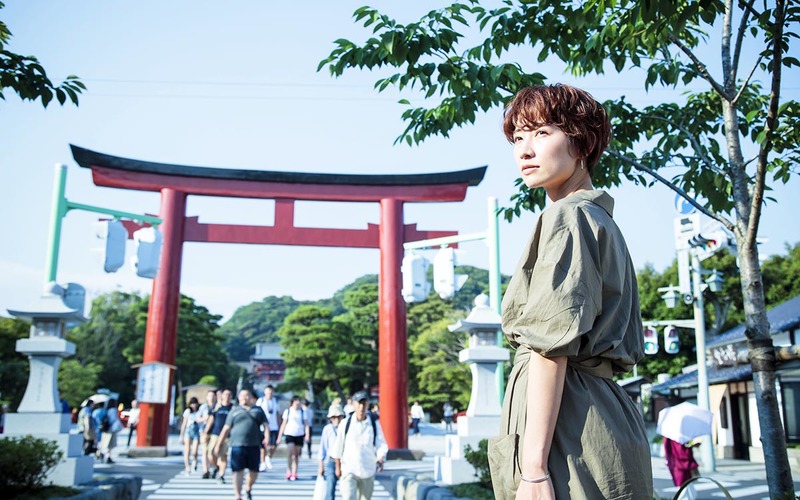
The Kamakura area
Kamakura prospered as a political hub during the Kamakura period. Kamakura has many famous shrines and temples, such as the historic landmark Kamakura Great Buddha of Kotoku-in Temple, and Tsurugaoka Hachimangu Shrine which has been connected to Minamoto no Yoritomo, the founder and the first shogun of the Kamakura shogunate. Kencho-ji Temple and Enkaku-ji Temple are a part of the five famous temples of Kamakura, Hase-dera Temple houses the Hase-Kannon statue, and temples such as Tokei-ji Temple and Hokoku-ji temple were rated three-stars by Michelin Green Guide Japon.
In addition, you can enjoy flowers such as hydrangea, roses, plums, and cherry blossoms every season of the year. It is a vibrant destination for many tourists around the world. There are many traditional Japanese patisseries and fancy cafes that you can walk around and explore, which is another attraction of this city. Even on rainy days, the trees, plants, and cobblestones create a serene scenery, making Kamakura a famous and picturesque ancient city.
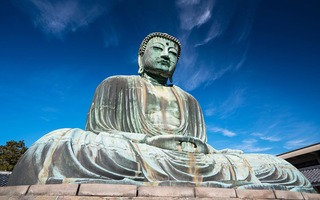
A The Great Buddha of Kamakura
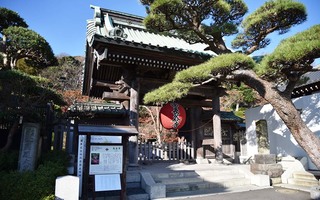
B Hase-dera Temple
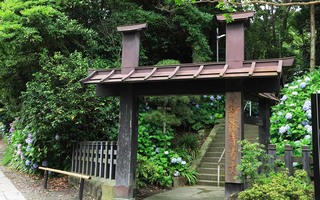
C Myouhon-ji Temple
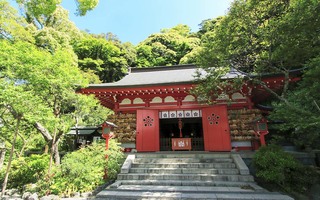
D Egara Tenjin-sha Shrine
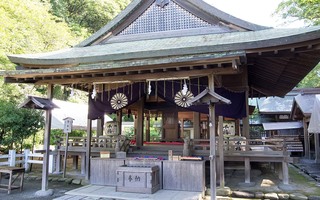
E Kamakura-gu Shrine
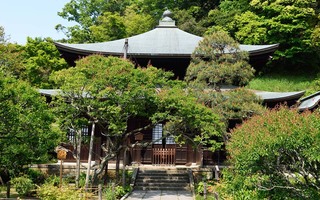
F Zuisen-ji Temple
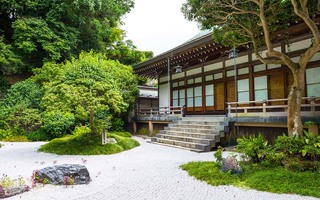
G Kukoku-ji Temple
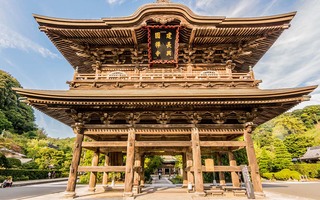
H Kenchou-ji Temple
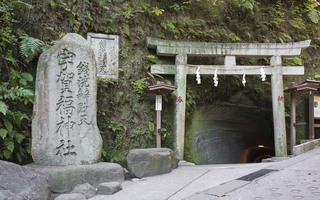
I Zeniarai Benzaiten Ugafuku Shrine
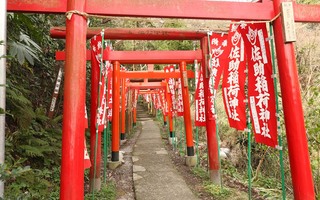
J Sasuke Inari Shrine
A
The Great Buddha of Kamakura

The Great Buddha of Kamakura, which is also the symbol of Kamakura, is the principal object of worship of the Kotoku-in Temple, and is designated as a national treasure. The official name is Douzou Amida Nyorai Zo. It is about 11.3 meters tall and the weight is about 121 tons, making it the second largest Buddha statue after the Great Buddha of Nara. It is said that the construction of this Great Buddha first began more than 750 years ago, around the year 1252.
At the time of its construction, the Buddha was built with wooden structures and covered with golden gilt. However, records indicate that it collapsed from strong winds that occurred during the Muromachi period and the major earthquake that occurred during the Age of Civil Wars. The Buddha was eventually rebuilt in the middle of the Edo period, and has reached the present day as a symbol of Buddhism’s Eastern influence. Because the interior of the Great Buddha is hollow, you can also have a valuable experience of entering the statue.
B
Hase-dera Temple

Hase-dera Temple is an old temple that opened in the year 736 before the Kamakura period. It is commonly referred to as “Hase Kannon”. The principal object of worship is the eleven-face Kannon, which is said to have been carved from one camphor tree. It is more than 9 meters tall, which makes it Japan's largest wooden Buddha. Hase-dera Temple is also famous for the flowers that can be enjoyed each season. They gained the name “Hydrangea Trail” for having more than 40 different breeds and 2,500 bulbs of hydrangea flowers in the temple.
C
Myouhon-ji Temple

Myohon-ji Temple is the oldest temple of the Nichiren-shu sect located in an area called Hikigayatsu. The temple’s roots date back to the year 1203 when the youngest child and the only survivor of the Hiki clan, Yoshimoto, built a memorial for his family members who were attacked and killed by the armies of Hojo Masako’s father, Tokimasa.
It is a temple with many attractions such as the mountain gate, two Deva King guardian statues, main temple hall, and Yakusido hall of the Medicine Buddha. The temple is full of nature despite being located near downtown Kamakura, and visitors can enjoy a beautiful scenery every season. In spring the temple becomes full of flowers including cherry blossoms and crabapple. Fireflies can be seen in early summer, and autumn leaves and ginkgo can be enjoyed in fall.
D
Egara Tenjin-sha Shrine

Egara Tenjin-sha Shrine is a shrine dedicated to Sugawara no Michizane, the "god of academics", who is enormously popular among students studying for entrance exams. Many students visit the shrine and write their prayers on the wooden tablets called “ema”. The shrine was also closely devoted and protected by samurai and shogun because it was worshiped as a guardian of the devil’s gate, when Minamoto no Yoritomo opened the Kamakura Shogunate. The shrine’s sacred tree is a 900-year-old great ginkgo tree. This shrine was once considered as one of the three major shrines with Kitano Tenmangu Shrine of Kyoto and Dazaifu Tenmangu Shrine of Fukuoka. Egara Tenjin-sha Shrine is also famous for its plum trees, and has over 100 plums planted including the earliest blooming winter plum. You can also see the sculpture of the mythical Kappa creature painted by 154 cartoonists at the “Efude Zuka” in the shrine.
E
Kamakura-gu Shrine

Kamakura-gu Shrine was built by Emperor Meiji in 1869 in the early Meiji era, and he also named the shrine himself. It is also known as "Ootou no Miya ", and the worshiped deity is Prince Morinaga, son of the Emperor Godaigo. The prince devoted great efforts to attacking the Kamakura shogunate, and he made a remarkable achievement so that the emperor could seize political influence. However, at the beginning of the Muromachi period, he was put into confinement by the opposing Ashikaga Takauji at the Toko-ji Temple, and was later executed. Emperor Meiji is said to have built this shrine in this location where Toko-ji Temple used to be in order to pass on the prince’s will to future generations. The cell in which the prince was confined still remains behind the shrine’s main hall and available for visitors to see. Kamakura-gu Shrine is also known to repel misfortune. It is said that visitors can get rid of their misfortunes with "yaku wari ishi", which is a custom where the visitors blow on a circular cup to transfer their misfortune at which a rock is thrown, and if the cup shatters the misfortune is removed.
F
Zuisen-ji Temple

Zuisen-ji Temple was built by the monk Musou Kokushi in the late Kamakura period, and the name comes from the autumn leaves surrounding the temple that looked like a beautiful screen. To the rear of the main hall is the only remaining rock garden from the Kamakura period in Kamakura, two large caves “Tennyo-do” and “Zazen-do” that were created by carving out the bedrock of Kamakura stone, and in front of that there is a pond where you can enjoy the stunning scenery. In addition, Zuisen-ji Temple is a famous viewing spot for plum trees, and in the vicinity there are cherry blossoms, azaleas, peonies, manzaku, daffodils and other seasonal flowers all year round, giving Zuisen-ji Temple a unique name of "flower temple".
G
Kukoku-ji Temple

Hokoku-ji Temple is a temple built by Ashikaga Ietoki in the late Kamakura period, and the sitting statue of Gautama Buddha, which is the principal object of worship, is designated as an important cultural property of Kamakura City. In addition, the bamboo forest behind the main hall which is filled with around two thousand bamboo plants has gained a three-star rating by the Michelin Green Guide. It has helped the temple become known a "bamboo temple". There is a walking path in this bamboo forest, it has a magnificent scenery and a mystic atmosphere. There is a tea room in the bamboo forest, and you can enjoy delicious matcha tea and traditional Japanese sweets. Another attraction of the temple is the “Karesansui” rock garden. You can see Japanese cornelian cherry and amaranth flowers in spring and fall, respectively.
H
Kenchou-ji Temple

Kencho-ji Temple is the head temple of the Kencho-ji Temple sect of the Rinzai-shu school of thought in Buddhism, which is located in North Kamakura. It is said to be the first Zen temple in Japan built by high priest Lanxi Daolong who was invited from the Song dynasty by Hojo Tokiyori in the year 1253. Kencho-ji Temple was designated as the “first rank of Kamakura’s Five Temples”, the highest status among Kamakura Zen temples based on the "five-mountain system" established at the time of Ashikaga Yoshimitsu during the Muromachi period. The 730 year-old juniper tree in front of the Buddha hall is a symbol of this temple’s long history. Seasonal plants and flowers such as cherry blossoms in front of the Sanmon gate, hydrangea and autumn leaves are also notable, and the temple becomes crowded with many tourists during the blooming season. There is a statue of the Hansobo guardian and 12 large and small Tengu at the back of the temple, and because the view is nice, you can see Mt. Fuji from there on a clear day.
I
Zeniarai Benzaiten Ugafuku Shrine

Ugafuku jinja is a shrine that Minamoto no Yoritomo built in the Kamakura period. Following a divine message that he saw in a dream that “promised world peace if deities and Buddhas were commemorated with holy water”, he found a spiritual water springing on a bedrock and constructed the shrine nearby. The shrine is also commonly known as “Zeniarai benten” or “Money rinsing shrine” due to visitors who rinse their money for good luck following the tale of Hojo Tokiyori rinsing his money to pray for the "prosperity of his family". Modern day belief is that money rinsed at the shrine will come back in multiples, and you can see many visitors washing their money. The shrine has many bamboo baskets in which to do so, and the proper method is to purify and rinse your money with three scoops of water.
J
Sasuke Inari Shrine

Sasuke Inari Shrine is located on the way up the stairs through dozens of torii gates lined with a lot of red flags. In the late Heian era, Minamoto no Yoritomo heard a divine message to recruit soldiers from an old man named “Kakurezato no Inari”, and he achieved a remarkable accomplishment of defeating the Taira family. Later, Minamoto no Yoritomo found a small monument in the Kakurezato and built a shrine, which is known as the beginning of the Sasuke Inari Shrine. Currently it is a popular spiritual site where people wish for career advancement. In addition, the eleven-face Kannon next to the shrine is said to bring good luck to marriages and relationships. The temple is surrounded by dense trees and is wrapped in serenity, creating the atmosphere of a hidden village. You can also enter the famous "Kuzuhara Oka Daibutsu hiking course" from the rear of the temple's main hall.